
Last Chance for Winter Color
By Laurelynn Martin and Byron Martin
As the cycle of plant growth moves through the season, there are critical times for propagating, potting and pruning. Performing these cultural activities at the correct time will bring floral perfection and create spectacular future shows. Now, during the first few weeks of September, is the last chance for pinching and pruning to insure winter color.
Two environmental factors, shortening day length and cooler nighttime temperatures, are the mechanisms that stimulate flowers in most of our winter bloomers.
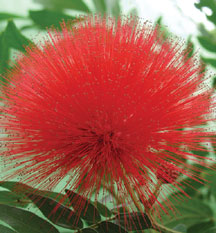 |
| Calliandra haematocephala |
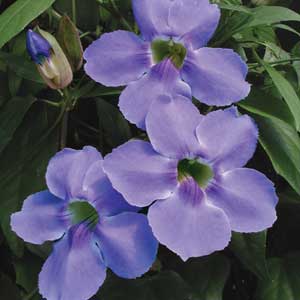 |
| Thunbergia grandiflora |
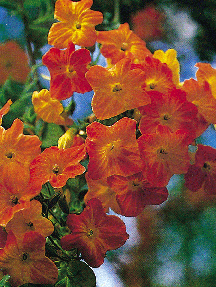 |
| Streptosolen jamsonii |
Plants that are sensitive to the shortening day length need to be under a 13-hour threshold of light. Usually by the time we reach the first part of October, this requirement is met. Keep in mind that the plants need to be kept in normal or natural day length even though it is a shorter exposure time. A final pruning or pinching needs to be done before the shortening day length threshold is met, this gives the young growth time to emerge and sense the short days. In most cases, a later pruning will delay the flowering or stop the process all together.
Short day length plants are as follows:
Calliandra haematocephala- The Red Powder Puff - flowers from November until March.
Thunbergia grandiflora - The Blue Sky Flower makes a stunning show throughout the winter, but don't prune it too late.
Streptosolen jamsonii - Marmalade Bush - great for standards and baskets.
Lopezia hirsuta - The Mosquito Flower also great for baskets and standards.
Pycnostachys dawei - a dark blue flowering African native that can be pruned freely through the short days and still come back into flower.
Manettia luteo-rubra - Twining Firecracker - We grow it in pots and in a basket. It will bloom any time under the shortening day length.
Coleus thyrsoideus - The Blue Coleus- A spectacular sky blue winter bloomer that thrives in cool day temperatures (needs a 60∞F night) and, as long as the days are short, it will continue to flower until March.
Euphorbia fulgens - closely related to the poinsettia and great for 5 months of flowering.
Cool nights are the next requirement for some winter bloomers. Generally the temperature threshold is below 60∞F and above 32∞F. Remember to maintain a consistent cool night and hold the plants under these temperatures until the buds are visible and well developed. For the most part, when we keep these winter bloomers cool through the winter months, the show keeps going. Also, daytime temperatures can be warm or cool. It is the nighttime temperatures that stimulate bloom.
Cool Nighttime Temperature Winter Bloomers are as follows:
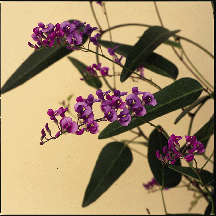 |
| Hardenbergia violacea |
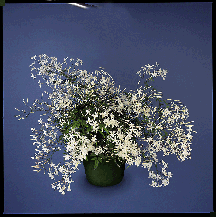 |
| Jasminum polyanthum |
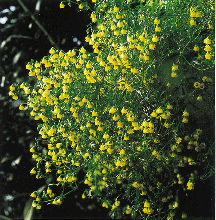 |
| Hermannia verticillata |
Hardenbergia violacea or the Happy Wander from Australia, puts on a grand show right in the depths of winter.
Jasminum polyanthum - the Winter Jasminum that’s fragrant and showy all at once.
Hermannia verticillata or Honey Bells one of the most fragrant plants that we grow and great for baskets.
Genista canariensis - The Canary Island Broom with its sprays of yellow fragrant pea flowers that go on until April or beyond.
Phalaenopsis or Moth Orchid are mainstays in winter color and although it does not need as cool a night as many, it will bloom reliably when grown under night temperatures in the mid-to-high 50’s. Keep them constantly at these temperatures for four weeks and, like magic, a spike will appear. The earlier you cool them down, the sooner you’ll have flowers.
So get out your pruning shears, embrace the shorter days and cooler nights and soon you will be rewarded with your indoor Eden of color during the winter months.

